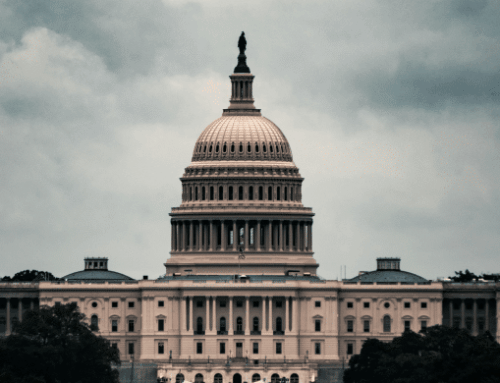The Department of Defense is the nation’s single largest consumer of energy and accounts for more than 75 percent of the federal government’s energy use. By itself, it is the world’s largest consumer of petroleum. Full stop. So, it’s not surprising that even minor shifts in the military services’ usage and policies could result in significant positive outcomes vis-a-vis climate change.
The obvious place to affect Pentagon policy is in the annual National Defense Authorization Act (NDAA). During recent action in the House, this legislative behemoth attracted more than 1200 potential amendments and the Rules Committee, whose job it is to set the parameters of debate on the floor of the House, allowed consideration of roughly 650 of them. Many of the original 1200 or so were “non-germane” meaning they had nothing to do with actual Pentagon policy. And most of those were rejected by the Rules Committee.
With major climate related legislation stalled and considering the aforementioned outsized consumption of energy the Pentagon accounts for, we expected more amendments specifically related to climate issues. Unfortunately, the House nibbled around the edges instead of doubling down on existing Pentagon policies to alleviate some of DOD’s reliance on fossil fuels. To be clear, even absent the huge climate consequences, reducing fuel supply chain woes and increasing energy resilience with affordable, reliable, clean sources of energy that are secure from disruption is a national security priority.
So, what did lawmakers do?
The draft bill included Section 313, “Prototype and Demonstration Projects for Energy Resilience at Certain Military Installations.” Among other things, Section 313 allows the Secretary of Defense to select two military installations to serve as testbeds to demonstrate technologies supporting climate resilient infrastructure. The Pentagon spends roughly $10 billion per year on military construction at U.S. military installations around the world. Military construction isn’t the entirety of Pentagon infrastructure, but it’s a large portion of it. If climate resilience is made a factor in deciding on military construction design and contracting, that’s an important step forward in making military bases less dependent on fossil fuels. But considering DOD has 585,000 facilities comprising 27 million acres around the globe, two installations is a bit paltry.
As you might expect, some lawmakers intent on discouraging climate resilience in the military had the long knives out for this provision. An amendment was offered by Rep. Burgess (R-TX) to strike Section 313 from the draft NDAA altogether. The Rules Committee nipped this in the bud by voting to not allow the amendment to be considered on the House floor. That’s a little unusual because Mr. Burgess is a senior member of the Rules Committee. But it also means the demonstration project provision remained in the House version of the bill.
Rep. Phillips (D-MN) offered two amendments related to climate issues. The first requires the Secretary of Defense to create a publicly available website, “displaying actions and reports on adaptation and mitigation investments it would help.” This amendment was successful and included in the House bill. Unfortunately, Rep. Phillips’ common sense second amendment never made it out of the Rules Committee. That amendment would have required a Pentagon report identifying military installations where climate change is expected to have a negative impact on that base’s mission in the next 20 years. This kind of early warning report would be helpful so future Congresses could make changes to infrastructure to slow the impact of climate change. Unfortunately, it seems Congress prefers to be the proverbial ostrich with its head in the ground.
A successful amendment by Rep. Castor (D-FL) requires Department of Defense parking construction plans to provide electric vehicle charging capacity for at least 15% of motor vehicles to be parked at the facility. This appears to be for only new construction and would not require the installation of charging stations in existing parking facilities. So again, baby steps. We’ll be waiting for the new all-electric version of the F-35 and can’t wait to see all those expensive new hangars retrofitted with charging stations! /Sarcasm/ Not happening!
Rep. Perry (R-PA) offered an amendment, which was rejected by the Rules Committee, to strike U.S. contributions for climate resilience programs in the North Atlantic Treaty Organization (NATO) Security Investment Program (NSIP). This unfortunate idea may have fallen afoul of U.S. treaty obligations to NATO (small problem) and died without a vote.
As would have been demonstrated by the report Rep. Phillips was seeking, like the rest of us, the Pentagon is a victim of climate change. Bases flood, wildfire threatens installations and heat and smoke affect training. Tyndall Air Force Base was completely destroyed by Hurricane Michael and is still being rebuilt (unwisely) years later. But the Pentagon can also help. It’s purchasing power in the marketplace is unrivaled. Simply amending the Federal Acquisition Regulations to require the Pentagon to prioritize contract awards to companies that practice methods to significantly reduce carbon emissions would have a far-reaching effect. The long-term savings to the Pentagon and the taxpayer would far outweigh the initial investment.
Well, the NDAA isn’t done yet and now the Senate has its bite at the Pentagon policy apple. This bill has been historically viewed as “must pass” and it has been signed into law every year, for more than six decades so it’s a good bet some version of it will pass again this time. This bill needs to make the Pentagon a leader on climate mitigation. Our national and fiscal security depends on it.










